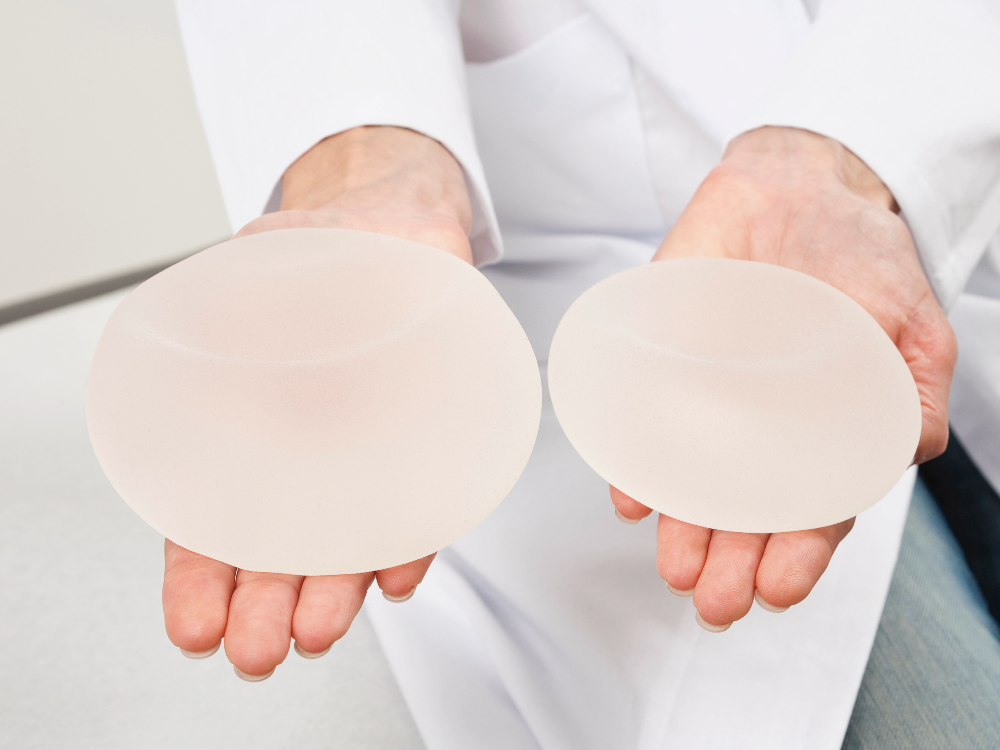
Many women who have previously undergone breast augmentation surgery may find themselves considering downsizing their breast implants for various reasons. Encino, CA plastic surgeon George Sanders, MD says setting realistic expectations is as important as the implant size you choose. Ahead, he shares his insights into the common reasons behind this choice and how to get a smaller breast size through revision surgery.
Understanding the Desire for Breast-Implant Downsizing
Dr. Sanders sheds light on the primary motivations driving patients to downsize their breast implants. He notes, “The most common reason is that the patient has gained weight in the chest area, most commonly because of menopause.” Women who once had a moderate ‘C’ cup may now find themselves with a cumbersome ‘DD’ cup due to life changes. The desire for a reduction often stems from discomfort, shoulder and upper back pain, exercise difficulties, disproportionate body balance, wardrobe challenges, and shoulder grooving caused by bra straps.
Another scenario Dr. Sanders encounters is when patients who recently underwent breast augmentation are dissatisfied with their implant size. In such cases, he reassures patients that a straightforward implant exchange can often address their concerns.
Factors Influencing Breast-Implant Revision
The feasibility and safety of breast implant–revision surgery to reduce breast size depend on several critical factors. Dr. Sanders explains, “A reduction in size can be accomplished by a reduction in implant volume, a reduction in the amount of breast tissue and fat, or a combination of both.”
However, there are limits to reducing implant volume since the smallest implant size available is 100cc. Dr. Sanders illustrates this point, saying, “If a woman is of a 40DD cup size and has a 400-cc implant in place, her maximum reduction in implant size would be 300cc, which translates to a one to one and a half cup size decrease from an implant exchange.”
To achieve further reduction, the option of implant removal arises. However, Dr. Sanders advises caution, as this can result in less upper breast fullness, a concern for many patients. Downsizing implants can also lead to increased breast drooping, necessitating a concurrent breast uplift procedure. An uplift involves resizing the areola, repositioning it higher on the breast, and tightening the skin in the lower part of the breast. This approach allows for the removal of excess skin, further reducing breast size. Dr. Sanders emphasizes the need to preserve the blood supply to the nipple, limiting the extent of breast-tissue removal.
Setting Realistic Expectations
Patients often enter the consultation room with specific expectations about going smaller with their breast implants. Dr. Sanders addresses these expectations by incorporating visual aids into the discussion. He shares, “Since there is no standard for breast cup sizes, I have found the use of photographs to be quite helpful as I try to understand the size desired.” Additionally, breast-implant sizers offer a practical way to illustrate the potential volume reduction achieved through a combination of implant-size reduction and breast-tissue removal.
Challenges and Complications
Breast implant–revision surgery for downsizing comes with its own set of challenges. Dr. Sanders points out one significant hurdle: “Achieving an adequate amount of reduction while still preserving upper breast fullness.” To address this, a breast uplift can help maintain upper breast volume, but it may not always fully meet the patient’s expectations. Another challenge lies in achieving the desired reduction within the constraints of how much implant volume can be reduced and how much breast tissue can be safely removed without compromising nipple blood supply.
Success Stories: Achieving Desired Smaller Sizes
Dr. Sanders shares two successful breast implant–revision cases where patients achieved their desired smaller breast size. One case involved a 70-year-old woman who had initially undergone breast augmentation at age 30. After experiencing weight gain in her chest area during menopause, she sought a reduction to an uplifted D cup. “After discussing options, she decided that she wished to keep implants in place and undergo an uplift. She didn’t want too small of an implant since she wanted to maintain some degree of upper breast fullness.”
Dr. Sanders performed an implant exchange, downsizing to a 200cc cohesive gel implant, coupled with an uplift and removal of 200 grams of skin and fat. “The result was a 40 full D cup size, accomplishing a one and a half cup size reduction while maintaining upper breast fullness,”he says.
In another case, a 26-year-old woman who had previously undergone two augmentation procedures found herself with a 34 DD cup size. She desired a reduction to a full C cup without an uplift due to concerns about scarring. “We agreed that an implant exchange alone would be done, with the option of an uplift later if desired,” he explains. “At surgery I reduced her implants to 300cc and tightened the implant pocket to shift the small implants away from the underarm area and towards the center of the breast, producing a shapely full C cup size. She was delighted and has not opted for an uplift.”
Choosing the Right Size and Shape
Choosing the new implant size and shape is a collaborative process between the patient and the surgeon says Dr. Sanders. He advises considering chest wall dimensions and matching implant diameter to chest width to achieve a natural appearance. Volume calculations are essential, factoring in the extent of breast tissue and implant size reduction needed. Patients should also be prepared for the possibility that achieving their exact desired reduction may not always be feasible.
When it comes to breast-implant downsizing, Dr. George Sanders emphasizes the importance of open communication and realistic expectations. Through careful assessment, visual aids, and expert guidance, patients can make informed decisions to achieve their desired smaller breast size while maintaining a natural look and feel.






